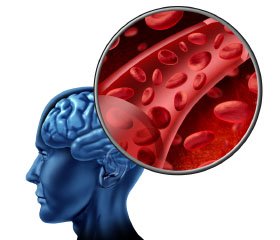Международный неврологический журнал 2 (72) 2015
Вернуться к номеру
Features of fatal and nonfatal stroke outcomes
Авторы: Iu. Severyn - Department of Psychiatry, Narcology, Neurology and Medical Psychology V.N. Karazin Kharkov National University, Kharkov, Ukraine
Рубрики: Неврология
Разделы: Клинические исследования
Версия для печати
The study of survival rates, causes of death and disability in patients after cerebral stroke (CS), as well as clarification of the factors affecting the outcome, is an important task of modern neurology, since the incidence of CS increases every year, and the mortality rate gains the lead among all pathologies. The rationale of the topic was the basis for the formulation of the objectives of this study: to identify the features of fatal and nonfatal stroke outcomes.
Materials and methods: The data of 1091 patients with CS who were treated at the city clinical hospital № 7 (Kharkov, Ukraine) were studied. Statistical analysis of obtained data in the program Statsoft Statistica, version 6.0 was carried out.
The results and their discussion: All patients were divided into 2 groups: 1-st group 870 "survival" patients and 2-nd group 221 "dead" patients. The average age of patients in the 1-st group was 66.5(±0.34) years, and in the 2-nd – 68.12(±0.74) years. The outcome of stroke was not dependent on the gender of the patient the ratio of the deceased and surviving patients among men and women was the same. When analyzing the influence of risk factors on the outcome of stroke across the entire sample a correlation between Ischemic stroke (IS), hypertension, myocardial infarction, diabetes, high body mass index, smoking and alcohol abuse was revealed. The dependence of mortality rate on the previous antihypertensive therapy (AHT) in patients (χ2 = 15.5629, р = 0.00042 < 0.05) was revealed. This dependence was typical for IS, but not for Hemorrhagic stroke (HS).
Medical ambulance was the main source of hospitalization in both groups (79.3 % in the 1st group and 92.8 % in the 2nd group). The majority of patients in both groups were transported to the hospital in time up to 3 hours (47.2 % and 66.1%, respectively), but the highest mortality of patients was observed during this period of time (26.2 %), which was due to the severity of the patients ' condition.
The baseline patient´s condition and changes in the system of physiological characteristics had a significant impact on stroke outcome. When the degree level of consciousness impairment increases, the probability of death in all types of stroke was significantly increased (χ2 = 431.7039, р = 0.0000 << 0.05). Type of the lesion in the brain, its localization and size also influenced the outcome significantly. The probability of death was 12.13% in patients with IS, and 56.22% with HS. The ratio of IS to HS in the 1-st group was 1:9 and 1:1 in the 2-nd. Deaths correlated with right-sided localization of the lesion (χ2 = 7.547428, р = 0.00601 < 0.05) and its large size. The presence of cardiac arrhythmia, fever, leukocytosis, high level of blood glucose, creatinine, urea, fibrinogen, indirect bilirubin and erythrocyte sedimentation rate correlated with fatal outcomes.
A high dependence of outcomes on a reasonable and timely initiated treatment on the prehospital stage (χ2 = 12.36122, р = 0.00044 < 0.05) was revealed. The causes of death and complications depending on the type of stroke was studied and allowed differentiated approach to their prevention.
The conclusions. Stroke outcomes is affected by various factors, depending on the patient's age, baseline severity of his condition, co-morbidities and risk factors, type of stroke, adequacy, timeliness and validity of measures in the acute period. To improve stroke outcomes the measures of public awareness about need for emergency treatment, particularly among patients with modifiable risk factors is of critical importance. In addition, the clear regulation of the doctor´s actions at the prehospital stage in order to reduce cases of unreasonable antihypertensive therapy administration and polipragmazie is required. At the hospital stage, the multidisciplinary approach to early diagnosis and modern treatment algorithms adherence is recommended. Special attention to the prevention and early diagnosis should be given.

